

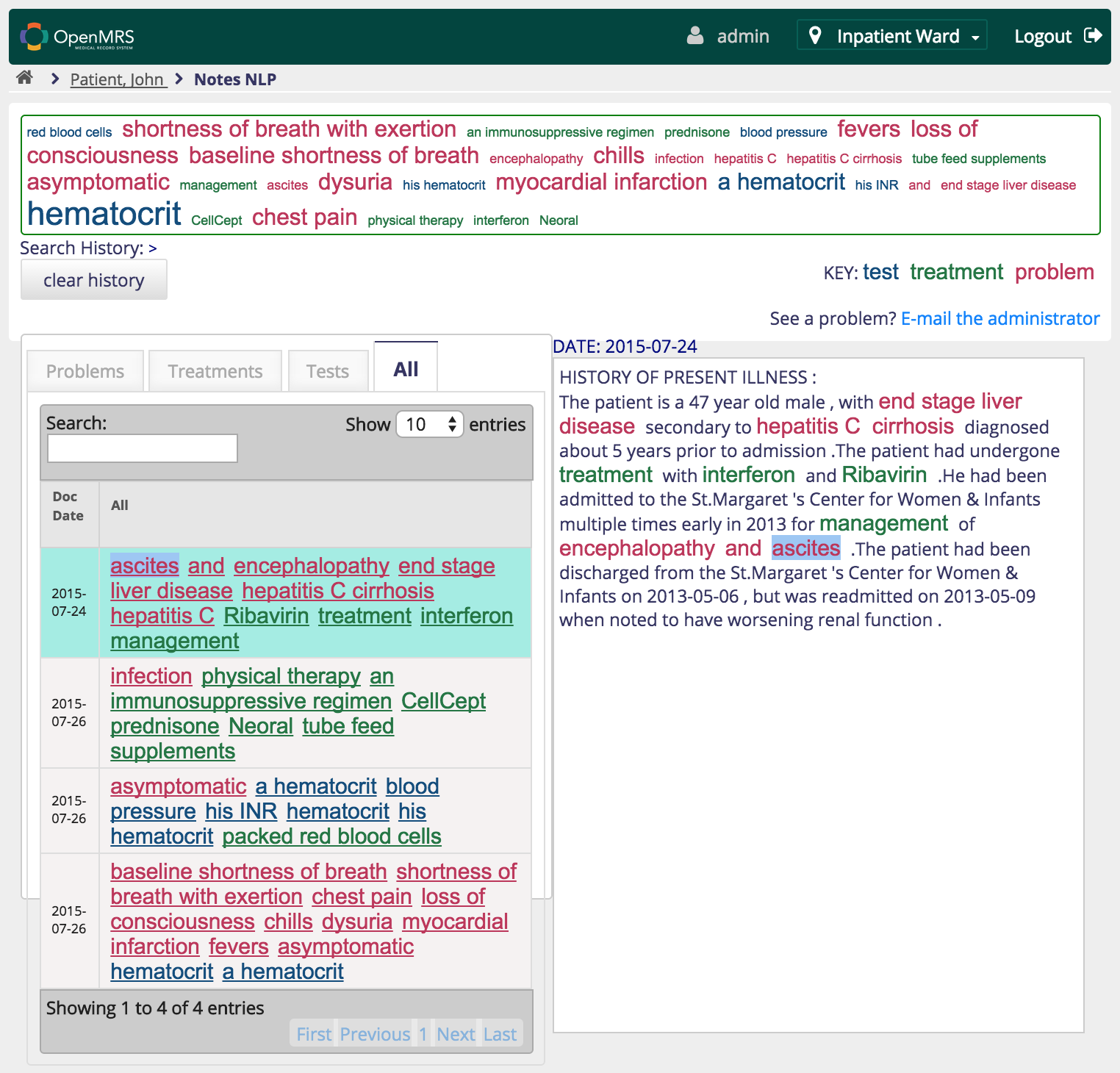
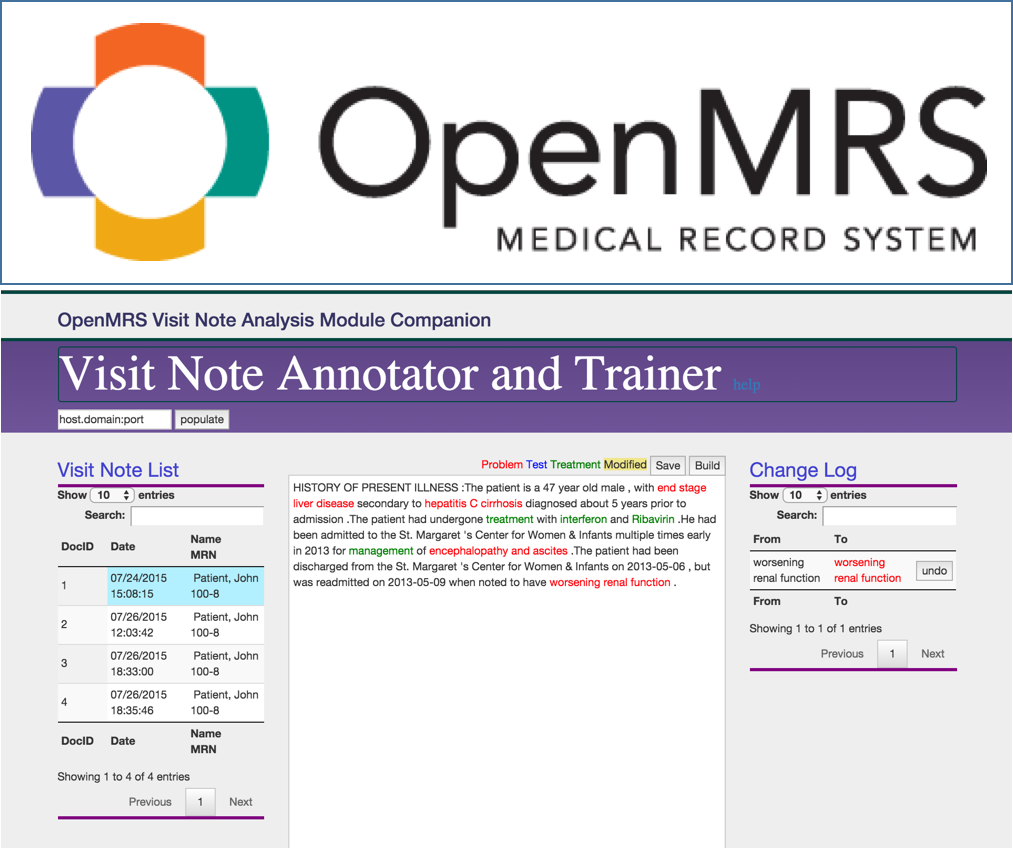
While Electronic Medical Record systems (EMRs) have dramatically improved provider access to patient information, much of this information is unstructured free text and not natively supported in the EMR.
As part of my Master's thesis I developed a biomedical named entity extraction system to make this free text more usefull. This system was implemented in the widely deployed open source medical informatics platform OpenMRS.
The module includes online processing of free-text clinical notes, interactive text renderings to drill down into results, and a standalone language model training application for continuous improvement of entity recognition performance.
The module, source, and documentation is available here.
This work was presented at the IEEE international Conference on Bioinformatics and Biomedicine 2015 in Washington, DC, PDF.
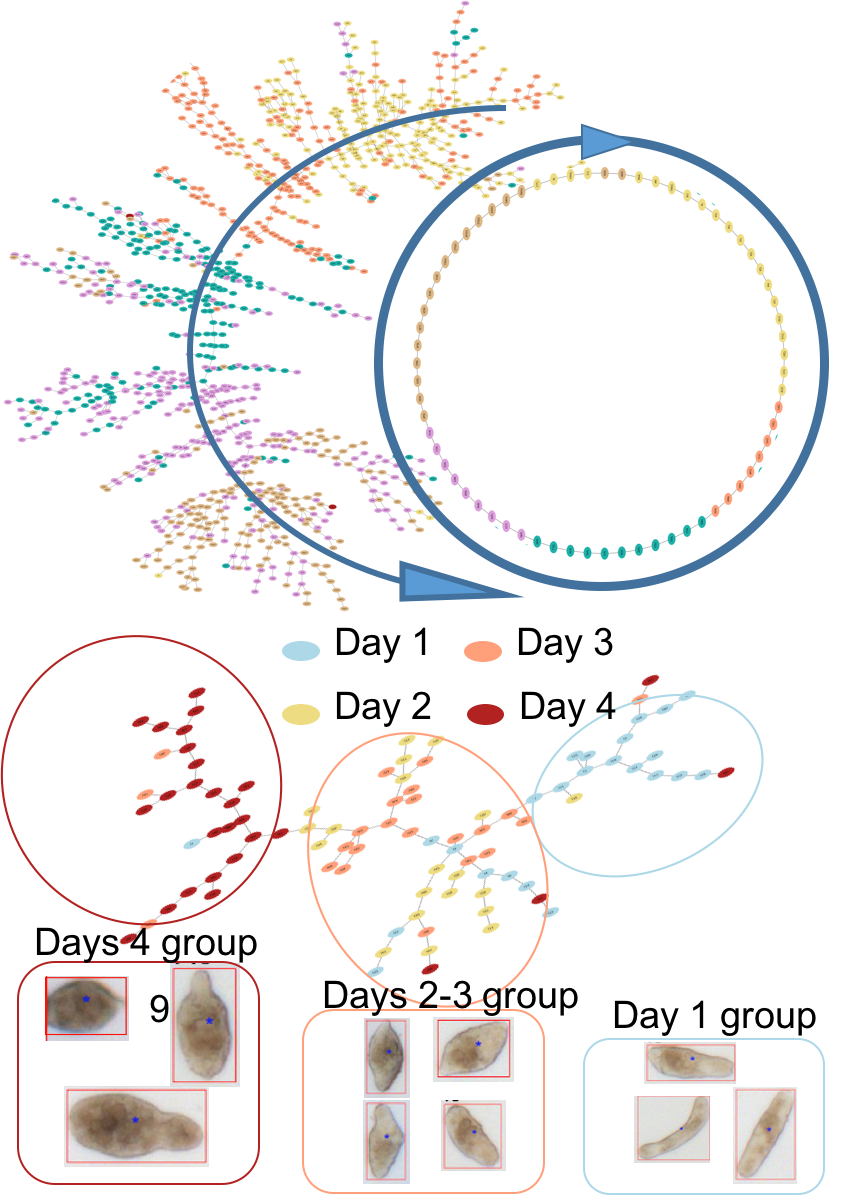
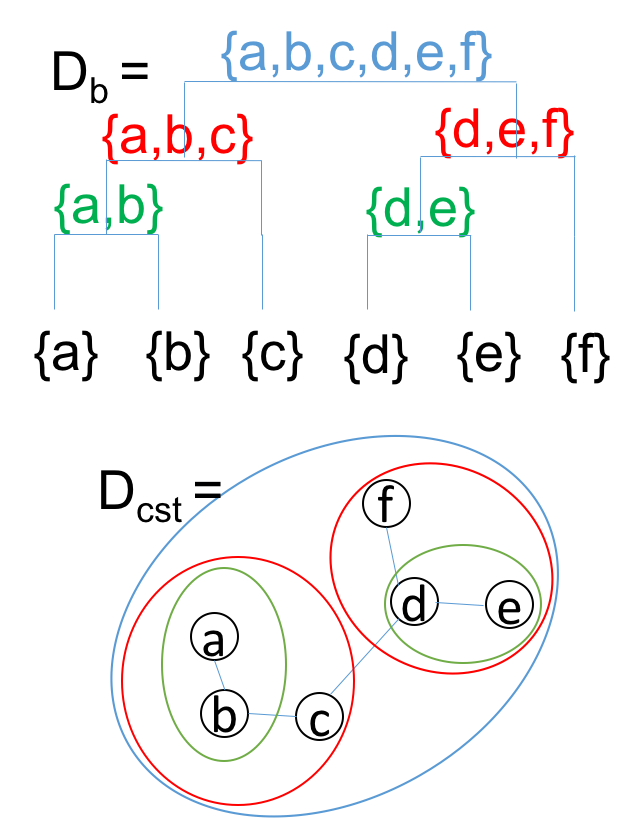
Biochemical processes are dynamic processes expressed over time (and space). Identifying the progression-order of an unsynchronized set of biological samples is crucial for comprehending the dynamics of the underlying molecular interactions.
Many existing methods based on minimum spanning trees do not directly capture internal structures such as clusters during the reconstruction. We developed the notion of the Cluster Spanning Tree that outperforms previous methods on many datasets.
This work was presented at the 12th International Symposium on Bioinformatics Research and Applications (ISBRA) in Minsk, Belarus. PDF
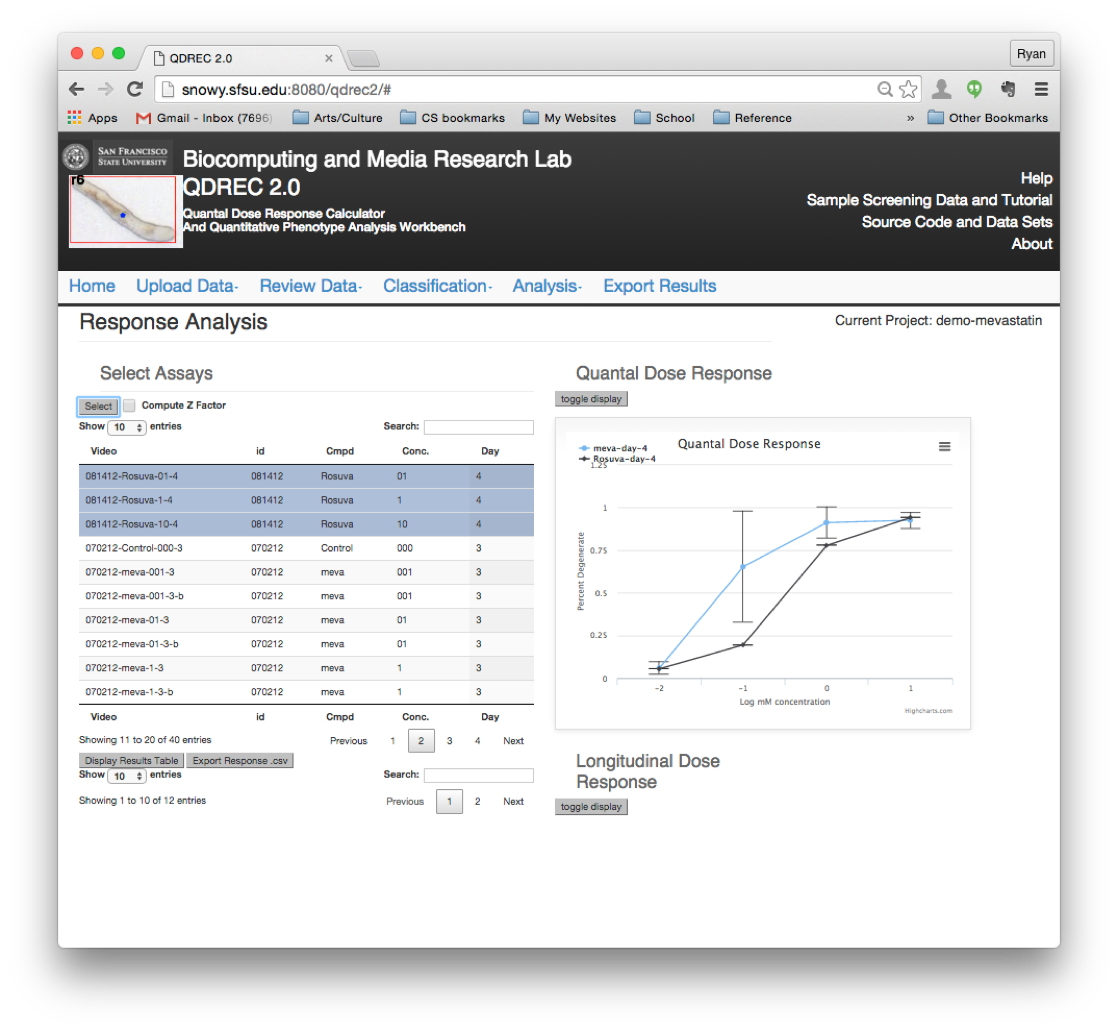


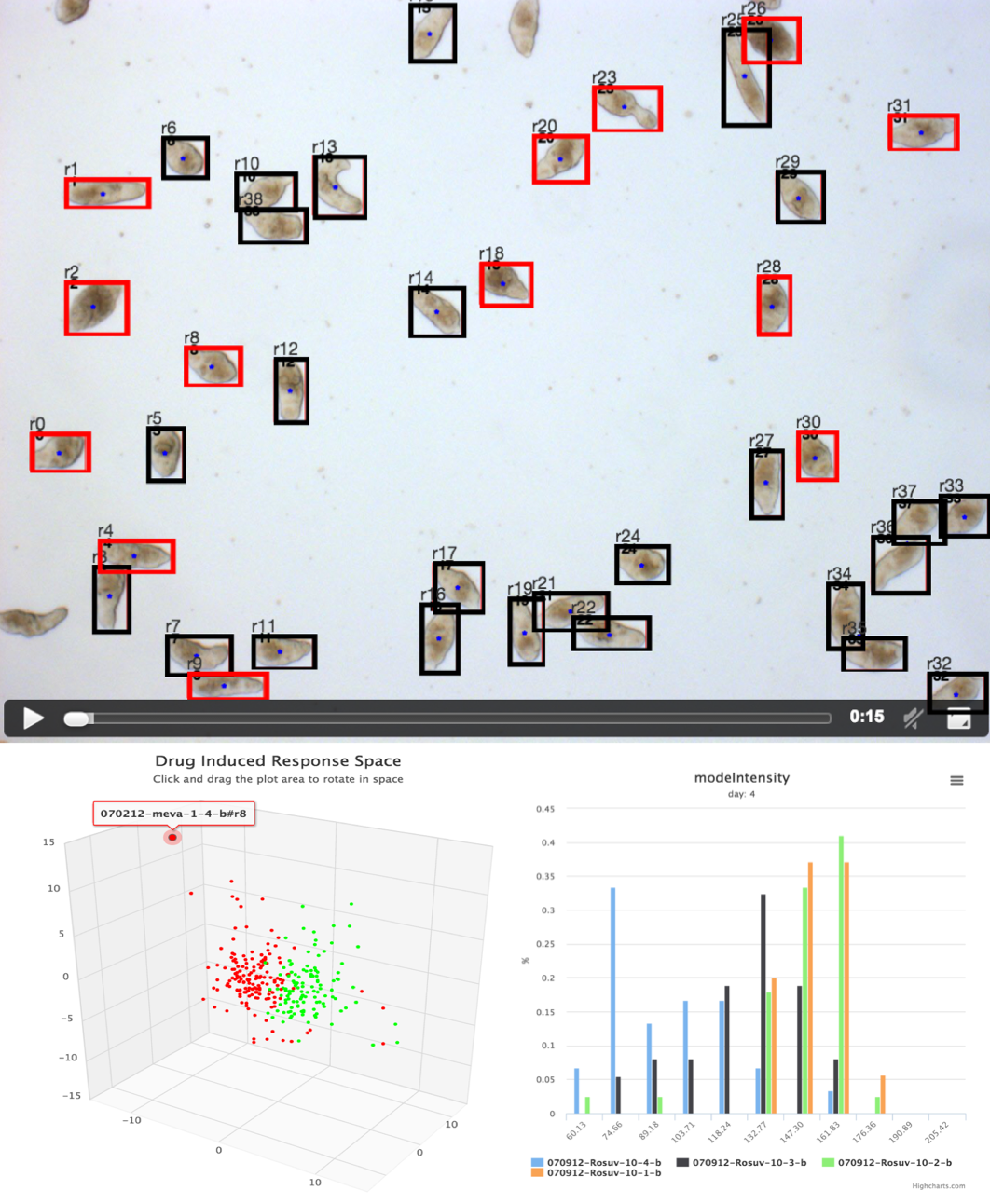
Schistosomiasis is a condition effecting rural and impoverished communites around the world. We are developing QDREC 2.0 the Quantal Dose Response Calculator and Quantitative Phenotype Analysis Workbench to allow for objective, quantitative, and reproducible analysis of image and video based drug screens.
QDREC 2.0 is a browser based web application that provides an interface to supervised and unsupervised machine learning algorithms and data visualizations that promote data exploration and consistant results across assays.
QDREC 2.0 is under development and yet to be published.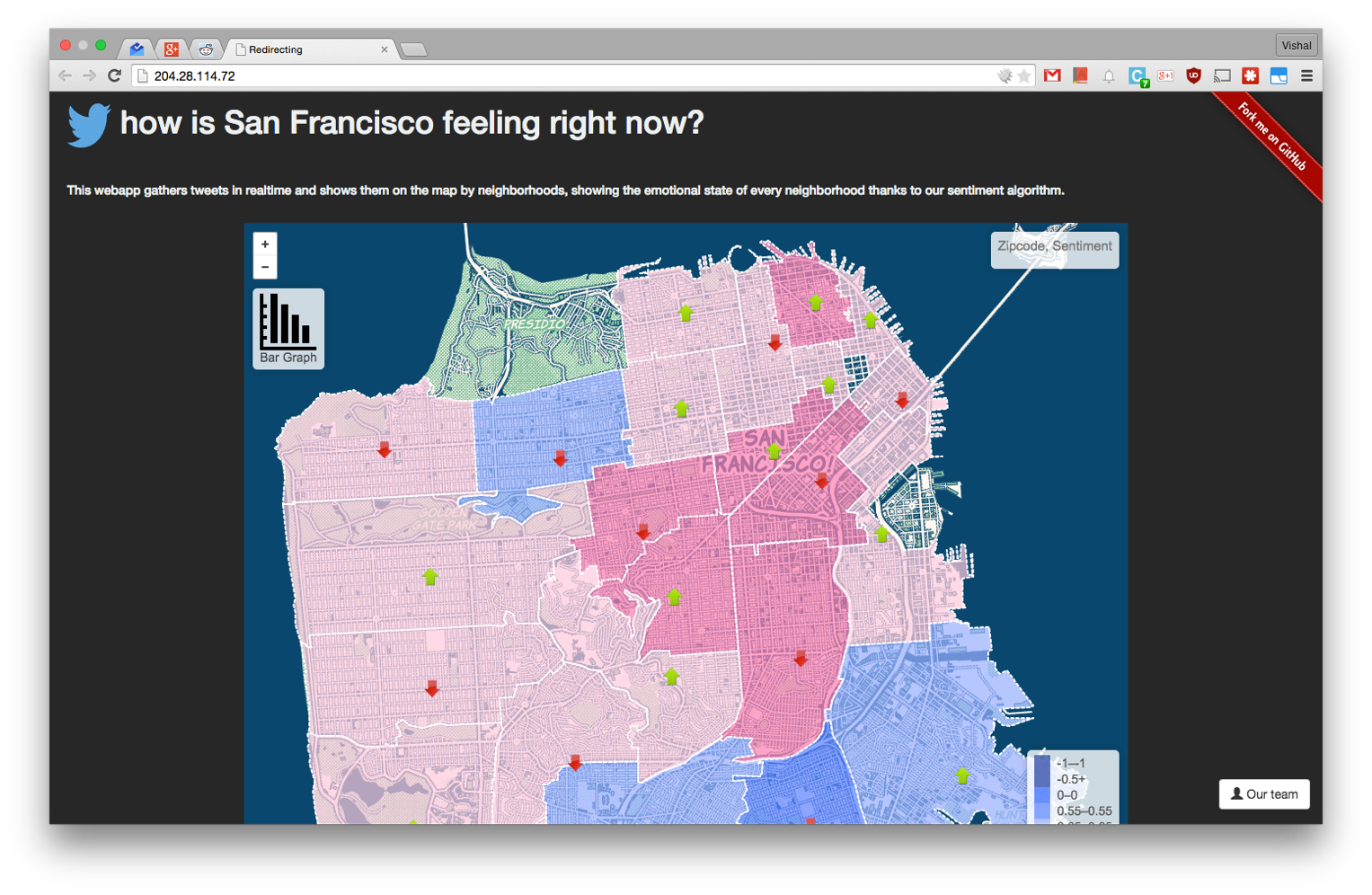

Twitter offers novel insight into user sentiment through access to the live and spontaneous observations and reactions. This information is invaluable to policy makers and other civic entities.
To exploit this data, we developed machine learned Twitter sentiment models to examine location specific sentiment trends. We successfully correlated positive local sentiment with high civic activity through 311 reports.
We also developed the web application Atmospheres that monitors the live feed of Tweets from San Francisco to compute neighborhood sentiment trends.
I'm Ryan, a data scientist and engineer based in the Bay Area. I like finding solutions to data problems.
Sometimes I also like to play guitar and ride my motorcycle.
Social Media Pharmacovigilance
Adverse drug side effects are a leading cause of death during patient care. However, only an estimated 10% of drug side effects are identified during clinical trials.
The massive scale of social media makes it a promising data mining target for identifying uknown side effects.
We developed methods based on text processing, graph theory, and data integration to identify instances of these adverse drug reactions in Twitter.
This work was presented at the 2016 Midsouth Computational Biology Society anual conference.The journal article version of this work is currently under peer review for publication.